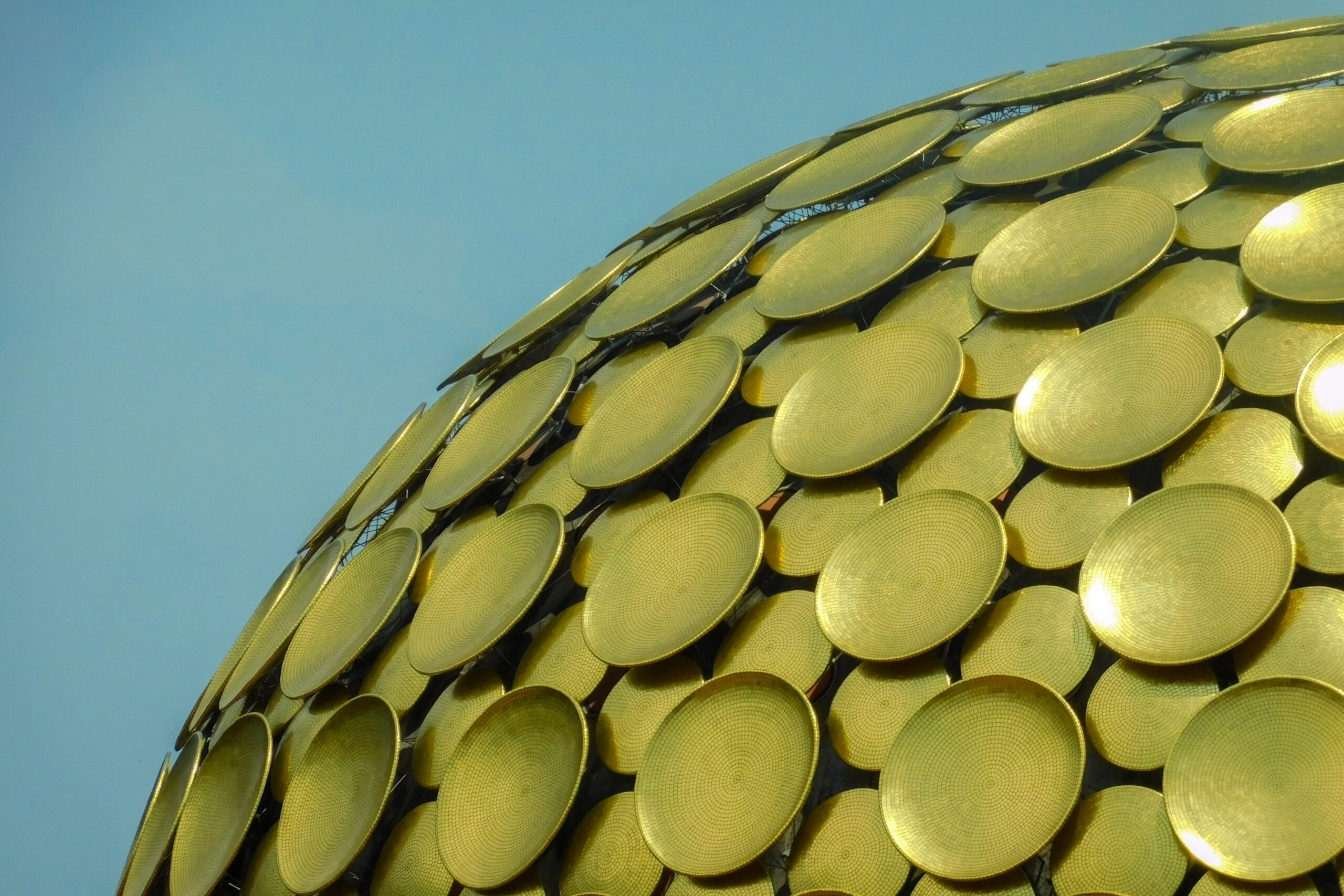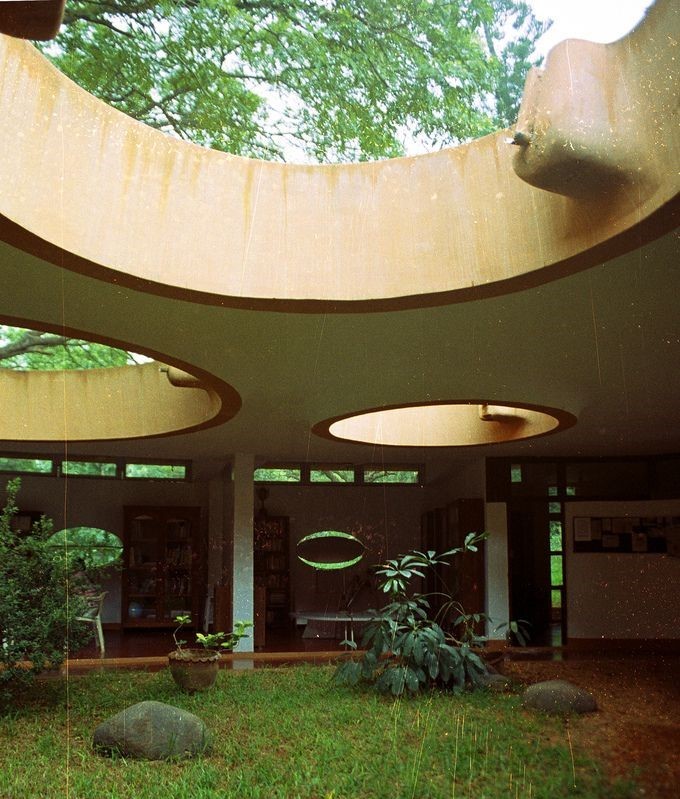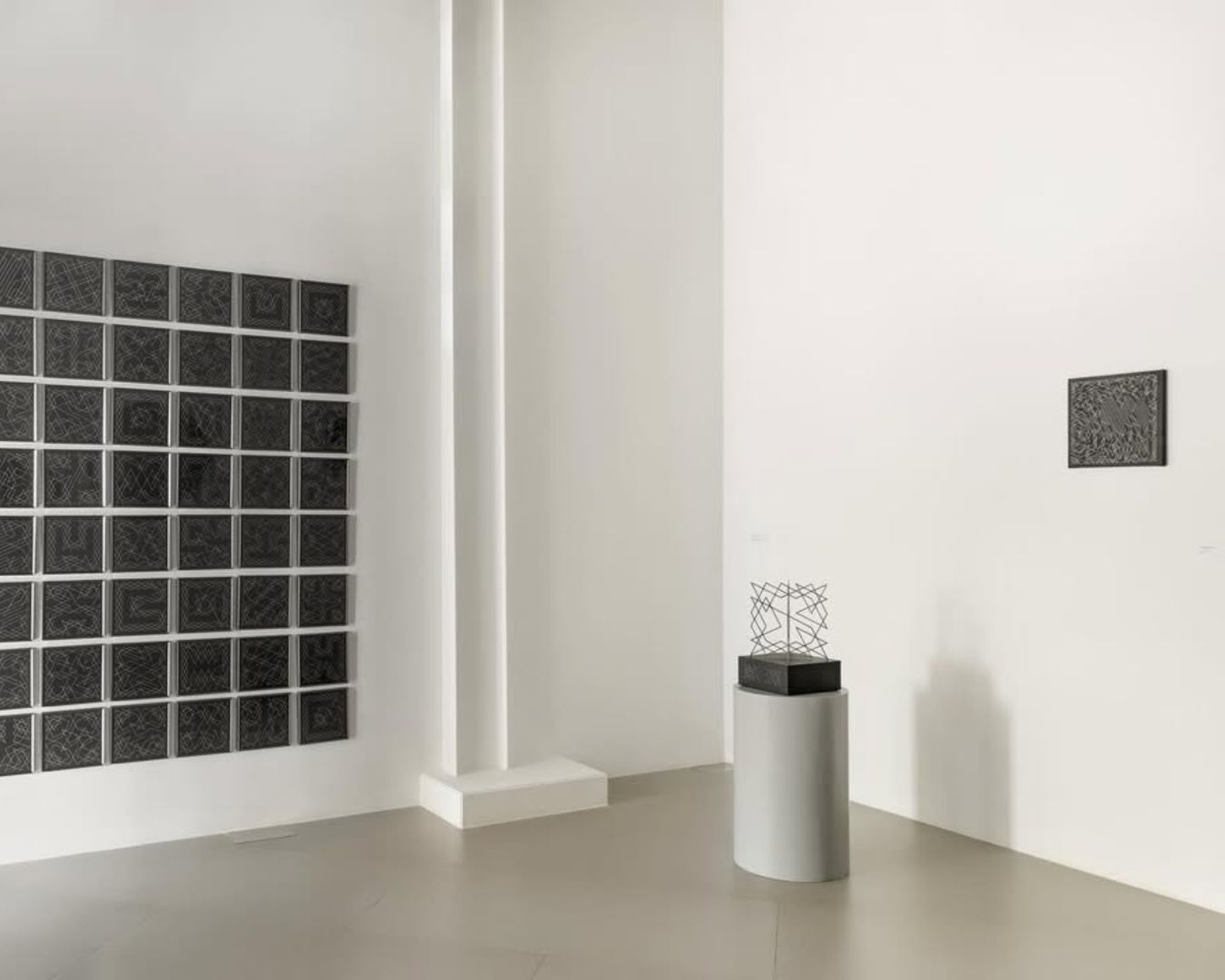Nestled in the fabric of the world are enclaves that exude an unmistakable aura of harmony, where a primal, communal spirit flourishes. Among these rare gems, Auroville stands as a testament to the relentless pursuit of a utopian ideal—a place where boundaries blur, and the essence of unity and sustainable living permeates the very air. In this small township, bathed in the soft glow of a unique vision, the principles of Sri Aurobindo and The Mother have given rise to a thriving community that transcends nationalities and cultures. Auroville in Pondicherry, Tamil Nadu often referred to as the “City of Dawn,” invites exploration into a realm where the spirit of human unity and a commitment to sustainable coexistence weave seamlessly into the tapestry of daily life.
In the mid-20th century, amidst a global backdrop of social and environmental challenges, The Mother envisioned a place where people from all walks of life could come together, transcending nationalities and cultures, to live in unity and harmony. During the mid-1960s, the concept of the township took shape and was presented to the Government of India, receiving their endorsement before being brought to the General Assembly of UNESCO. In 1966, UNESCO unanimously passed a resolution applauding it as a project of significance for the future of humanity, thereby providing wholehearted support and encouragement. In 1968, Auroville was officially inaugurated as an international township.The core philosophy of Auroville is rooted in the teachings of Sri Aurobindo and The Mother, emphasising the evolution of consciousness and the unity of all beings. The Mother envisioned Auroville as a place where people could live beyond the constraints of traditional societal structures, transcending divisions based on nationality, religion, and economic status. She believed in the potential of individuals to evolve spiritually and contribute to the collective progress of humanity.
Auroville operates on several key principles that distinguish it from conventional communities. One such principle is the idea of “divine consciousness,” which guides the residents to lead a life in harmony with nature and each other. Sustainability is a fundamental aspect of Auroville, with a strong emphasis on eco-friendly practices, renewable energy, and organic farming. The township encourages artistic expression, holistic education, and a conscious, mindful way of life. At the heart of Auroville’s experiment is the commitment to sustainable living. The township has implemented innovative eco-friendly technologies, including renewable energy sources like solar power and wind turbines. Auroville promotes waste reduction, water conservation, and sustainable agriculture, showcasing a model for environmentally conscious living.
Auroville showcases a wealth of natural juxtapositions, positioned gracefully on a plateau approximately 50 metres above sea level. Across Auroville’s landscape, the persistent call of the ‘brain-fever’ bird, also known as the common hawk cuckoo (Cuculus varius Vahl), contrasts with the more delicate chirping of various small songbirds, creating a symphony of natural melodies. Periodic thickets of mature bamboo, painted in hues of green and yellow, reach skyward, swaying gently in the ocean breeze. These bamboo stalks, adorned with their delicate leaves, have served as a muse for numerous accomplished artists, emanating a sense of elegance and graceful form. The ‘work’ tree, named by the Mother and native to Australia but introduced to Auroville in its early years, boldly asserts itself in the local habitat, attempting to dominate the scenery. Widely employed in carpentry and construction, the ‘work’ tree has become an integral part of Auroville’s landscape.
Auroville’s After school; Aerial shot of Auroville
Auroville’s carefully designed landscape unfolds through six distinct zones, each integral to the character of this utopian community. At its core, the Peace Area serves as a sanctuary featuring the iconic Matrimandir, serene gardens, and an amphitheatre housing the Urn of Human Unity. Additionally, a visionary lake project enhances the area’s tranquillity while doubling as a groundwater recharge zone. To the north, the Industrial Zone spans 109 hectares, hosting “green” industries and symbolising Auroville’s commitment to self-sufficiency. It accommodates small and medium-scale industries, training centres, and the city’s administrative hub. The Residential Zone, the largest at 189 hectares, aims for a harmonious balance between individual and collective living, allocating 55% to green spaces and 45% to built surfaces. The International Zone, west of the Peace Area, covers 74 hectares and stands as a testament to human unity in diversity with national and cultural pavilions grouped by continents. Towards the east, the Cultural Zone, spanning 93 hectares, envisions itself as a hub for applied research in education and artistic expression, housing facilities for cultural, educational, artistic, and sports activities. Encircling the city area is the Green Belt, a 1.25 km radius acting as a barrier against urban encroachment. It hosts organic farms, dairies, orchards, and wildlife areas. Currently covering 405 hectares, the Green Belt exemplifies the successful transformation of wasteland into a thriving ecosystem. Future plans for an additional 800 hectares aim to amplify its impact on soil and water conservation, groundwater recharge, and environmental restoration.
Auroville stands as a beacon of hope and inspiration for those seeking alternative models of living that prioritise sustainability, unity, and spiritual evolution. The quaint township continues to evolve as a living experiment, influencing not only its residents but also serving as a source of inspiration for the global community. As we explore the principles and philosophy behind Auroville, we are reminded of the possibility of creating a more harmonious and interconnected world, one that aligns with the fundamental principles of human unity.
Words by Anithya Balachandran.
Image courtesy Auroville.







